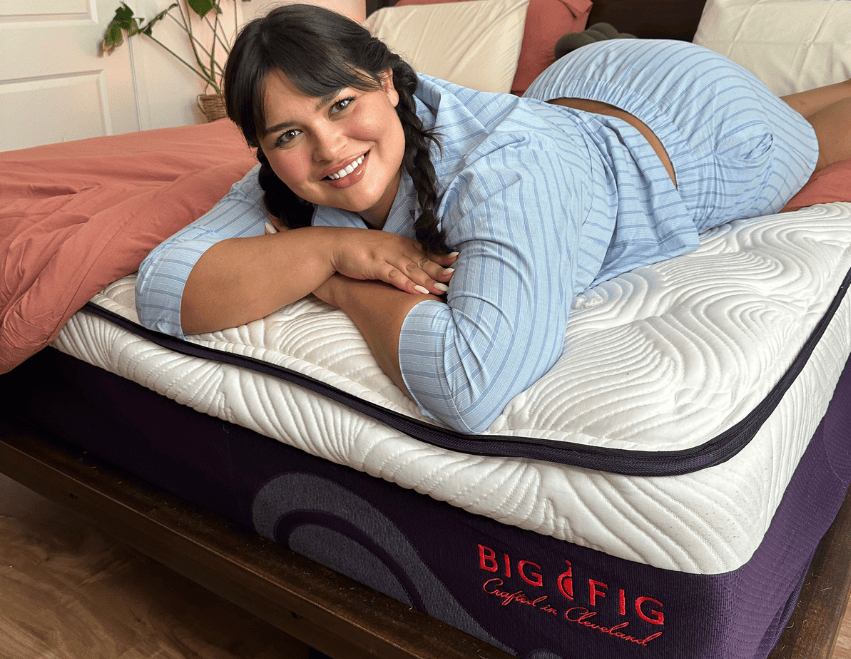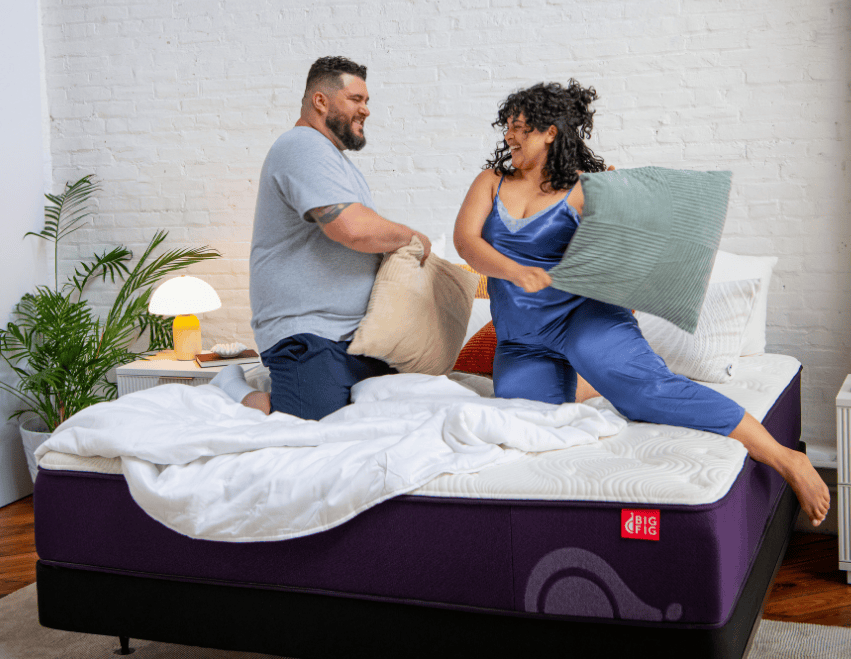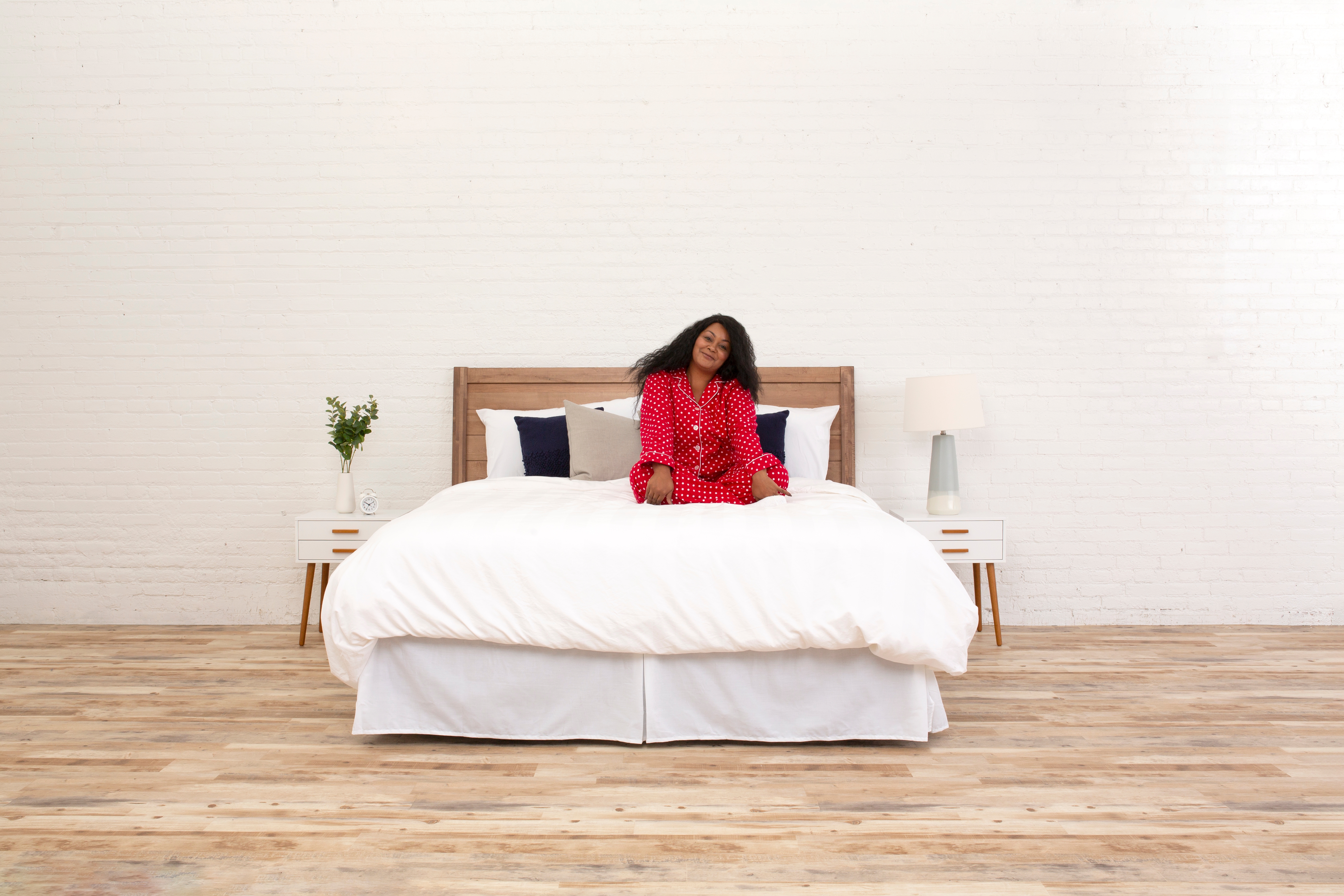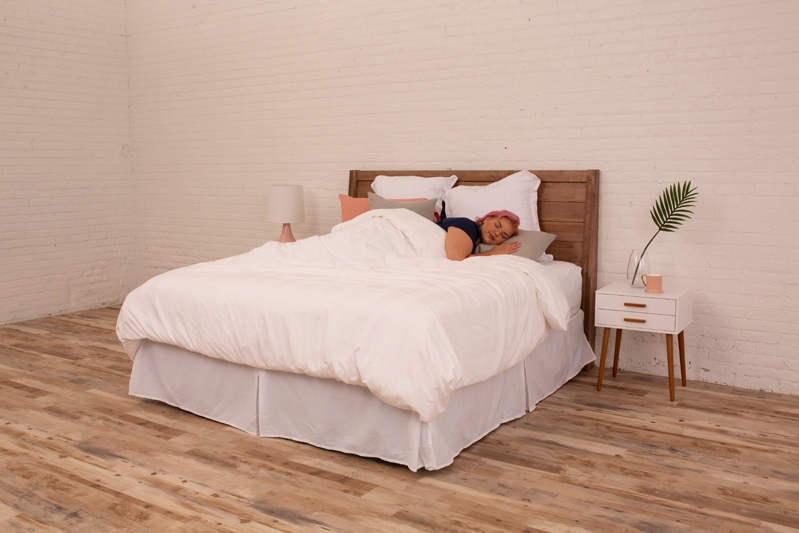You used to have one choice when you went shopping for a new mattress. Today, with so many different types of mattresses on the market, your choice is not as crystal clear as in years past. As the industry moves online, your selection seems to grow to the point where you could spend hours trying to find your perfect match for a good night’s sleep. This is great because no two humans are alike, and now everyone has a chance to find the best type of mattress for their body and sleeping style, but the choice paralysis can be daunting. At one point, you may have been limited by your body and sleeping style, but these days your options may seem endless. Whether you’re looking for a mattress for heavy people, the best mattress with edge support, or a hand tufted mattress, in this guide, we'll outline the various types of mattresses available in stores or online to help narrow down your choices.
The Evolution of Mattresses
First, let's talk a little about how mattresses have changed over the years. Even prehistoric humans looked for a soft place to lay their heads at night. Archeologists discovered the earliest known evidence of a "mattress" in a South African cave. The77,000-year-old artifact is about an inch thick and made from reeds and grass. By today's standards, it couldn't have been very comfortable but it had to be better than sleeping directly on the ground.
Early humans slept on similar pallets until ancient Egyptians built raised sleeping surfaces. They had a good reason for this: protection from snakes and other pests. Even so, these early beds lacked what we think of as a mattress. "Pillows" were made of stone or wood. Talk about uncomfortable!
It was the Romans who upped their mattress game and changed the world. Commoners' mattresses contained hay or reeds while more affluent Romans had feather or wool mattresses. Straw and down mattresses remained common through the Medieval period and Renaissance. By the 18th century, cotton was a common mattress stuffing.
Metal coil springs were introduced in the 1870s, but it wasn't until the 20th century that mattresses were mass produced. The innerspring mattress was the first style to become commercially available. That's where we'll begin our discussion of the different types of mattresses.

Pros and Cons of the innerspring mattresses
Innerspring models have been the most popular mattresses for decades. These mattresses contain steel coils that compress when you lie down. The mattress is topped with a padded layer, providing a soft barrier between your body and the metal springs.
Generally speaking, innerspring mattresses with more coils offer more support. Innerspring mattresses can be made of several types of coils, including:
- Continuous Coils. A single wire is used to support the entire mattress. The coils are shaped in an "S" pattern. This is usually the most affordable style.
- Bonnell Coils. These coils are shaped like an hour-glass and linked together to form a helix pattern.
- Pocketed Coils. These coils work independently of one other, with each wrapped in a fabric casing. The coil gauge (thickness of the wires) will determine whether the mattress is soft or firm. A thinner gauge coil makes a softer mattress and vice versa. Since the coils aren't linked together, you may not feel your partner move as with continuous or Bonnell coils.
- Offset Coils. Similar to Bonnell coils, offset coils are flattened on the top and bottom. The flattened edges created a hinge.
Innerspring Mattress Pros
- Widely available
- Lots of options
- Variety of firmness options
Innerspring Mattress Cons
- Wears out quickly
- Prone to sagging in the middle
- Can squeak or make noise
- Poor motion isolation
- Doesn't conform to your body
Pros and Cons of Foam Mattresses
Also called memory foam, these mattresses first came on the market in the 1990s. It compresses with the weight and pressure of your body and slowly returns to its original shape when you get out of bed.
Foam mattresses hug the body and offer relief from pressure point pain. However, some people find it difficult to move on this style and bigger sleepers will find themselves sinking into a foam mattress like quicksand. Even lighter sleepers can leave body impressions over time and make it difficult to sleep outside the dent in the bed. If you’re looking for a firm edge mattress, a foam mattress may not help you.
Foam Mattress Pros
- Quiet
- Resistance to allergens
- Soft for pressure point relief
Foam Mattress Cons
- Can make sleeping hot
- Little edge support
- Little surface support
- Body tends to leave compressions overtime
- No bounce
- Initial chemical odor
Pros and Cons of Latex Mattresses
Latex foam has been used in mattresses since the 1930s. Fun fact: the material was created by the Dunlop Rubber company by a scientist who used his wife's kitchen mixer to whip up the foam. The process added bubbles to the latex, giving it a cushioning effect.
A latex mattress is similar to a foam version, but it doesn't have the same ability to conform to your body. In other words, you won't sink into the mattress as far with a latex model. Also, since latex comes from rubber trees, some people consider it a natural mattress alternative. If that's your goal, look for natural latex instead of synthetic latex.
Pros of Latex Mattresses
- Many firmness options
- Conform to body
- "Green" option
- Quiet
Cons of Latex Mattresses
- Heavy and cumbersome to move
- Some people are allergic to latex
- Retains heat during sleep causing you to sweat
- Not as widely available
- Pricier than other options
- May need to be assembled
- Might smell like rubber initially
Hybrid Mattresses
Hybrid mattresses are some of the most popular mattresses available today. That's because they combine the best features of the other types of mattresses. A hybrid model offers the support and bounces of an innerspring with the comfort of latex or foam.
While assemblies vary, hybrid mattresses include a layer of coiled springs at the bottom topped with several layers of latex, foam or gel on top. The result is a more customized sleeping experience which has proven to be the best mattress for heavier people. However, since there are a lot of combinations, your mattress decision will depend on your personal preferences for comfort and support.
Hybrid Mattress Pros
- Combination of comfort and support
- Motion isolation
- Excellent support that prevents mattress sag
- Minimizes pressure points
- Easy to move
- Good edge support
- Best option for larger people
- Quiet
- Variety of firmness options
Hybrid Mattress Cons
- Can be heavy
- Some models pricey
- Might have an initial odor
The hybrid mattress is an ideal choice that can accommodate many different body types and sleep styles. But with so many hybrid models available, how do you choose what's right for you?
The Best Hybrid Mattress for Plus Sized Sleepers
Plus-sized sleepers should consider the Big Fig, a hybrid model specifically designed with larger folks in mind. The Big Fig Mattress is constructed of 1,600 high-quality pocket springs that are topped with three inches of foam cushioning. Individually wrapped coils support the layers of foam to maintain their shape and resilience over time.
What does that mean for you? You get the optimum mix of support and comfort. You get a mattress that won't sag. You get a foundation that will support your weight. Hybrid mattresses can even be considered the best mattress for plus sized couples as well.

Longevity is perhaps the Big Fig's best benefit. The mattress has been proven to last 20 years, even for two plus-sized sleepers, and the warranty supports this fact.
Other benefits include:
- A THERMOGEL COOLING ® topper that keeps you from getting hot while you sleep.
- Extra-firm edge support to help you feel secure in bed.
- Tufting to stop internal shifting.
- 20-year warranty that covers free repair and replacement.
At Big Fig, we stand in support of the plus sized community and work our tails off to make sure this underserved community is properly catered to, delivering the great night’s sleep every body deserves.
The Big Fig is the best type of mattress for people who want a bed that mixes comfort, support and durability. Click here to see what makes us different from the other guys.




